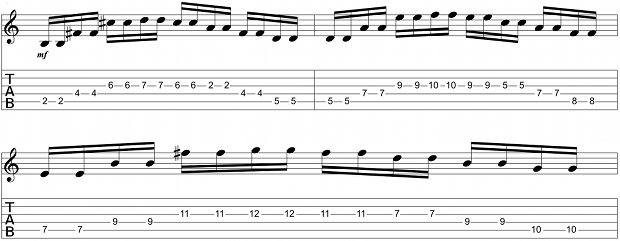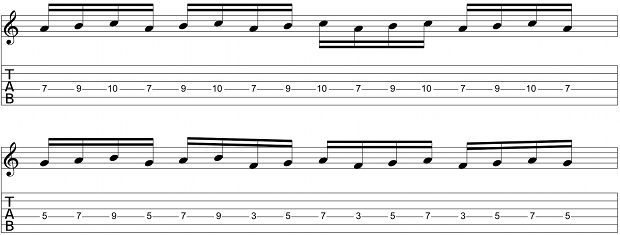Guitar rehab - picking-hand warmups
If you've spent a period of time away from playing, these useful exercises will help rebuild your technique

Welcome to my new series of lessons titled Guitar Rehab.
If you follow my column, you might've noticed that I haven't written any new lessons in the past few months. I had a problem with my arm that required surgery. As a result, I was unable to play guitar for three months.
Now that I'm able to play again, I'm excited to get back to writing and have many new lessons planned for the following weeks.
Lack of inspiration, time commitments such as work, medical problems, loss of interest, even video games are all valid reasons people take a break from playing guitar.
For that reason, I decided to start this series of lessons for anyone who has spent a period of time away from playing. These lessons will help you get back into playing regularly and give you some useful exercises to help rebuild your technique. When I started playing again, the first thing I noticed was how stiff my fingers felt and how uncoordinated my picking had become. My stamina was also very bad and my hands felt tired after only an hour of playing.
This first lesson will focus on a rhythm guitar warmup, which is primarily geared toward your picking hand. The goal is to warm up your picking wrist and gradually increase your alternate-picking accuracy.
For this series, all of the exercises will be played to a backing track, which I think will make them more enjoyable as opposed to just playing to just a click/metronome.

This first exercise is a 16th note pedal rhythm. You begin on the open A and play straight open notes. Try to relax your picking wrist and rest your palm on the bridge to mute the strings a little. Your alternate picking should sound smooth and flow with the music.
I'm going take a short break from the lesson to give my personal opinion about pedaling. I've read many lessons where they tell you to develop your alternate picking technique to a point where your down and up strokes sound identical. In my opinion, that’s good advice if you want to sound like a robot.
Humans will naturally play the down stroke slightly heavier to create a slight dynamic within alternate picking. Again, this is only my opinion, but I prefer to hear this dynamic as opposed to playing each note identically. Pedaling will groove much better to the music if you have this dynamic.

Back to the lesson! After the straight 16th note pedaling of the open A string, you will begin to play notes in sets of four across two stings (Exercise 2). You will play a descending pattern through the A minor scale with the open A between each note. This doesn't require too much coordination between picking and fretting hands but advances the exercise from a single string.

The next step is to move from sets of four to sets of two across three stings (Exercise 3). This does start to get challenging, especially when changing stings. For this exercise I move away from A minor and play the same pattern in the keys of B minor, D minor and E minor.

The final stage of the lesson is 16th notes, where you change note with every pick (Exercise 4). For this exercise, we just move through the common progression of A minor, G major and F major. I looped this chord progression of this exercise at the end of the backing track for you to improvise some solos over when you've finished.
As you can see, with each stage of the exercise it becomes slightly more challenging and requires more accuracy between the fretting and picking hands. I've made a video demonstration and also given you the backing track to practice along to. Cheers!
Will Wallner is a guitarist from England who now lives in Los Angeles. He recently signed a solo deal with Polish record label Metal Mind Productions for the release of his debut album, which features influential musicians from hard rock and heavy metal. He also is the lead guitarist for White Wizzard (Earache Records) and toured Japan, the US and Canada in 2012. Follow Will on Facebook and Twitter.
Get The Pick Newsletter
All the latest guitar news, interviews, lessons, reviews, deals and more, direct to your inbox!
“There are so many sounds to be discovered when you get away from using a pick”: Jared James Nichols shows you how to add “snap, crackle and pop” to your playing with banjo rolls and string snaps
Don't let chord inversions bamboozle you. It's simply the case of shuffling the notes around







![Joe Bonamassa [left] wears a deep blue suit and polka-dotted shirt and plays his green refin Strat; the late Irish blues legend Rory Gallagher [right] screams and inflicts some punishment on his heavily worn number one Stratocaster.](https://cdn.mos.cms.futurecdn.net/cw28h7UBcTVfTLs7p7eiLe.jpg)


